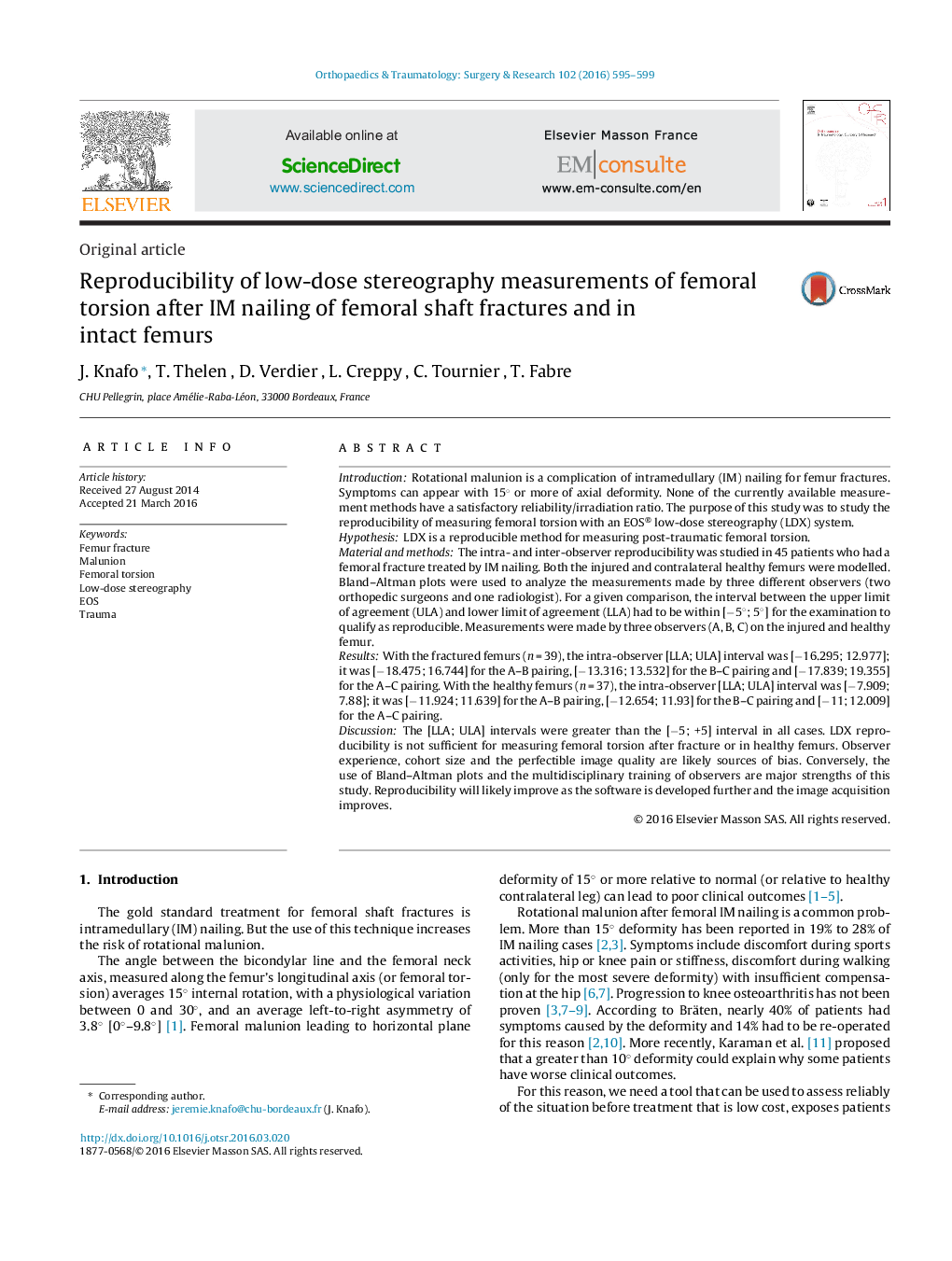| کد مقاله | کد نشریه | سال انتشار | مقاله انگلیسی | نسخه تمام متن |
|---|---|---|---|---|
| 4080791 | 1267567 | 2016 | 5 صفحه PDF | دانلود رایگان |

IntroductionRotational malunion is a complication of intramedullary (IM) nailing for femur fractures. Symptoms can appear with 15° or more of axial deformity. None of the currently available measurement methods have a satisfactory reliability/irradiation ratio. The purpose of this study was to study the reproducibility of measuring femoral torsion with an EOS® low-dose stereography (LDX) system.HypothesisLDX is a reproducible method for measuring post-traumatic femoral torsion.Material and methodsThe intra- and inter-observer reproducibility was studied in 45 patients who had a femoral fracture treated by IM nailing. Both the injured and contralateral healthy femurs were modelled. Bland–Altman plots were used to analyze the measurements made by three different observers (two orthopedic surgeons and one radiologist). For a given comparison, the interval between the upper limit of agreement (ULA) and lower limit of agreement (LLA) had to be within [−5°; 5°] for the examination to qualify as reproducible. Measurements were made by three observers (A, B, C) on the injured and healthy femur.ResultsWith the fractured femurs (n = 39), the intra-observer [LLA; ULA] interval was [−16.295; 12.977]; it was [−18.475; 16.744] for the A–B pairing, [−13.316; 13.532] for the B–C pairing and [−17.839; 19.355] for the A–C pairing. With the healthy femurs (n = 37), the intra-observer [LLA; ULA] interval was [−7.909; 7.88]; it was [−11.924; 11.639] for the A–B pairing, [−12.654; 11.93] for the B–C pairing and [−11; 12.009] for the A–C pairing.DiscussionThe [LLA; ULA] intervals were greater than the [−5; +5] interval in all cases. LDX reproducibility is not sufficient for measuring femoral torsion after fracture or in healthy femurs. Observer experience, cohort size and the perfectible image quality are likely sources of bias. Conversely, the use of Bland–Altman plots and the multidisciplinary training of observers are major strengths of this study. Reproducibility will likely improve as the software is developed further and the image acquisition improves.
Journal: Orthopaedics & Traumatology: Surgery & Research - Volume 102, Issue 5, September 2016, Pages 595–599